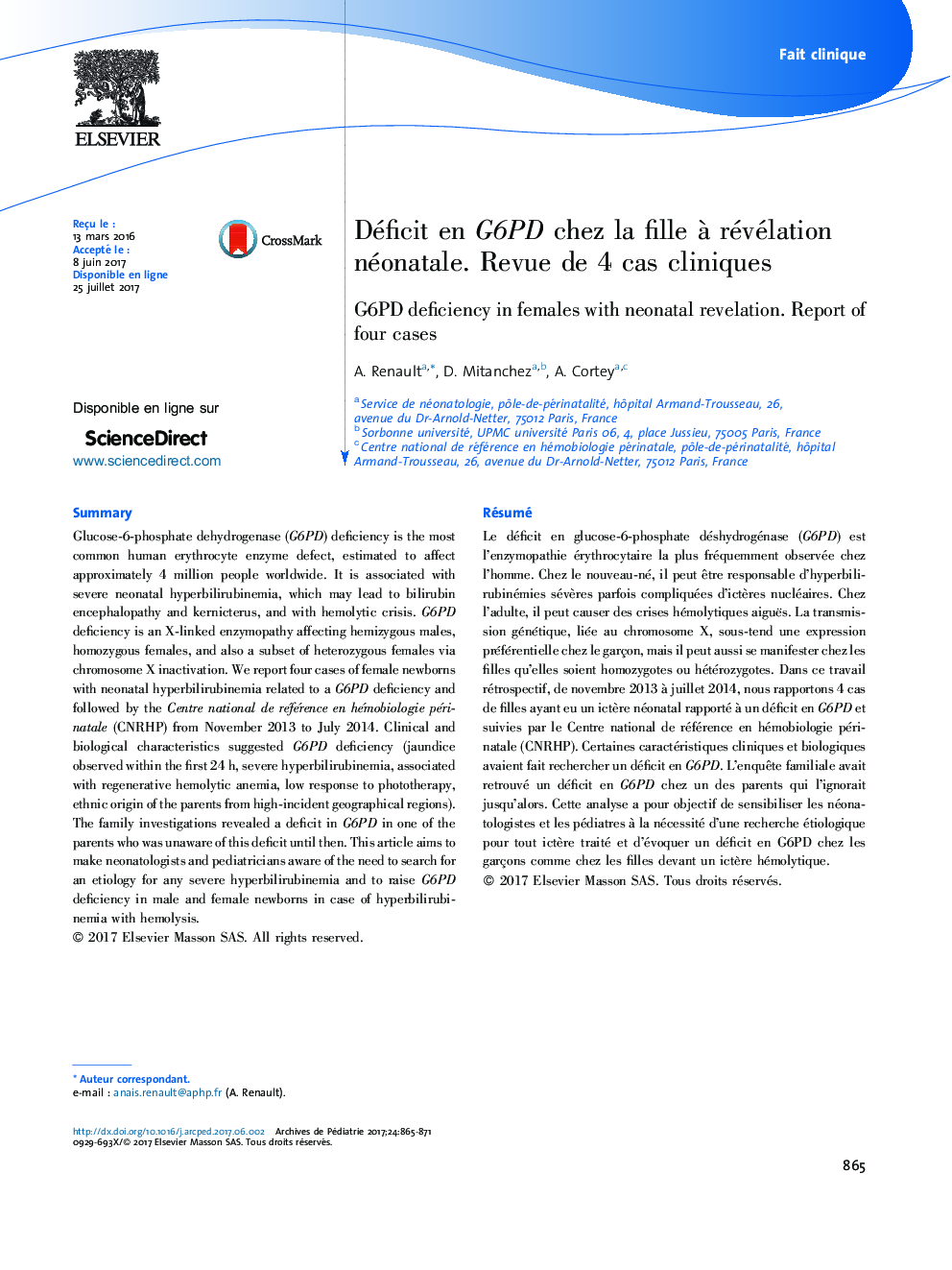| Article ID | Journal | Published Year | Pages | File Type |
|---|---|---|---|---|
| 5717376 | Archives de Pédiatrie | 2017 | 7 Pages |
RésuméLe déficit en glucose-6-phosphate déshydrogénase (G6PD) est l'enzymopathie érythrocytaire la plus fréquemment observée chez l'homme. Chez le nouveau-né, il peut être responsable d'hyperbilirubinémies sévères parfois compliquées d'ictères nucléaires. Chez l'adulte, il peut causer des crises hémolytiques aiguës. La transmission génétique, liée au chromosome X, sous-tend une expression préférentielle chez le garçon, mais il peut aussi se manifester chez les filles qu'elles soient homozygotes ou hétérozygotes. Dans ce travail rétrospectif, de novembre 2013 à juillet 2014, nous rapportons 4 cas de filles ayant eu un ictère néonatal rapporté à un déficit en G6PD et suivies par le Centre national de référence en hémobiologie périnatale (CNRHP). Certaines caractéristiques cliniques et biologiques avaient fait rechercher un déficit en G6PD. L'enquête familiale avait retrouvé un déficit en G6PD chez un des parents qui l'ignorait jusqu'alors. Cette analyse a pour objectif de sensibiliser les néonatologistes et les pédiatres à la nécessité d'une recherche étiologique pour tout ictère traité et d'évoquer un déficit en G6PD chez les garçons comme chez les filles devant un ictère hémolytique.
SummaryGlucose-6-phosphate dehydrogenase (G6PD) deficiency is the most common human erythrocyte enzyme defect, estimated to affect approximately 4Â million people worldwide. It is associated with severe neonatal hyperbilirubinemia, which may lead to bilirubin encephalopathy and kernicterus, and with hemolytic crisis. G6PD deficiency is an X-linked enzymopathy affecting hemizygous males, homozygous females, and also a subset of heterozygous females via chromosome X inactivation. We report four cases of female newborns with neonatal hyperbilirubinemia related to a G6PD deficiency and followed by the Centre national de référence en hémobiologie périnatale (CNRHP) from November 2013Â to July 2014. Clinical and biological characteristics suggested G6PD deficiency (jaundice observed within the first 24Â h, severe hyperbilirubinemia, associated with regenerative hemolytic anemia, low response to phototherapy, ethnic origin of the parents from high-incident geographical regions). The family investigations revealed a deficit in G6PD in one of the parents who was unaware of this deficit until then. This article aims to make neonatologists and pediatricians aware of the need to search for an etiology for any severe hyperbilirubinemia and to raise G6PD deficiency in male and female newborns in case of hyperbilirubinemia with hemolysis.
